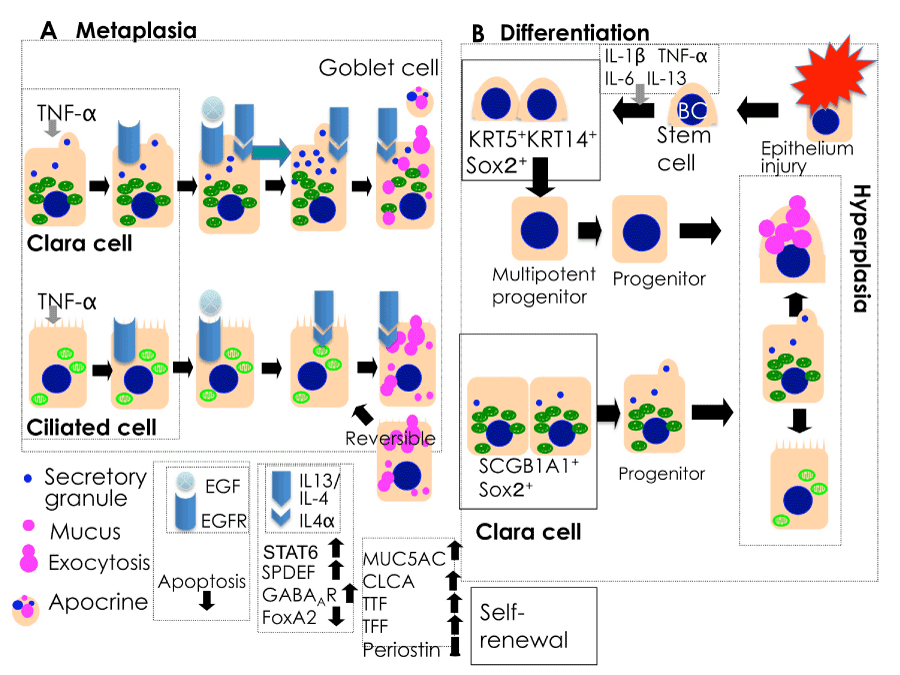
 |
| Figure 2: Nadel [21] reviewed that stimulation of airway epithelial cells with TNF-α causes EGFR expression. Curran and Cohn [33] proposed the hypothesis that goblet cell differentiation requires two signals (A). The hypothesis: Signal 1 activates EGFR on the epithelial cells (Clara and ciliated cells), leading to inhibition of epithelial cell apoptosis. Epithelial cells that survive have the potential to become goblet cells if provided with Signal 2, IL-13 binding to its receptor. Upon IL-13R and Stat6 activation, epithelial cells show an increase in SPDEF and reduced FoxA2 expression. GABAAR responsiveness is required for goblet cell metaplasia, which is induced by IL- 13. After expression of MUC5AC, CLCA and TIFF, cells lose the features of epithelial cells from which they arose and become goblet cells that produce mucins. Also reversible changes from established goblet cell metablasia to ciliated cells may occur. Hypothetical differentiation and hyperplasia depending on tentative working model for the self-renewal and differentiation of basal stem cells in mouse and human airways proposed by Rock et al. [82] are shown in (B) with some modification. A subset of BCs in the normal airway expresses both KRT5 and KRT14. BCs self-renew over the long term and generate ciliated, secretory cells and goblet cells. On the other hand, Clara cells expressing SCGB1A1+, may be one of stem cells, can proliferate and give rise to goblet, Clara and ciliated cells via progenitor cells. Also Sox2 is required for proliferation and differentiation of Clara and basal cells. Concequently, metaplasia from Clara cell to goblet cells and ciliated cells may occur after differentiation. |